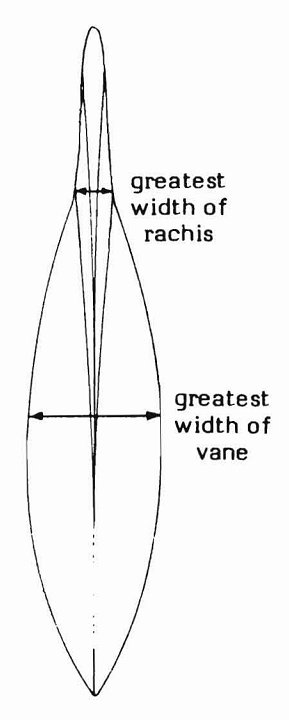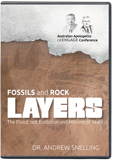Vampire Squid Can't Escape This Coffin
Pair of fossilized squid preserved in a catastrophic event—a snapshot of the post-fall world and the global flood
A recent news item mentioned that a vampire squid ancestor died while eating its dinner (another smaller vampire squid ancestor). While the cause of death is not known with certainty, the interpretation is that suffocation was the immediate cause of death for both. For the smaller squid, suffocating while being eaten alive was the proverbial “fate worse than death.” The lead author of the study, Dr. Christian Klug, had an interesting hypothesis in her interview with Livescience : “We assume that the predator was so happy about its catch that it did not realize that it was sinking. It probably wound up in the oxygen-poor water layers, suffocated, died and was embedded in the soft mud.”1
The journal article lists three possible contact scenarios between the two squids while alive: taphonomy (the creatures just happened to be swept up and buried together in that position), reproductive behavior, and finally, a predation attempt.2 The reproductive hypothesis was discounted fairly quickly as most living cephalopods mate in a different orientation than what this fossil shows. Additionally, from the snapshot of time that the fossil gives us, it appears that the tentacles of the larger squid were dragging the smaller squid to its jaws. The rarity of these kinds of squid as fossils and the seemingly predatorial behavior led the researchers to the likely conclusion (and we would concur) that this was a predation attempt.

Fig. 1. Squid gladius. Public domain image via Wikimedia commons.
The smaller squid is believed to be Parabelopeltis fexuosa, and the larger squid is thought to be Jeletzkyteuthis coriacea, based on size and mantle (and presumably gladius) length of about 400 mm. The gladius (fig. 1), so named because of its resemblance to the Roman short sword, is a chitinous internal structure that runs the length of the mantle, supports the squid mantle, and serves as a site for muscle attachment. The mantle of a squid (fig. 2) is the main external body part composed of skin and muscle that looks like a sheath covering the animal just below the head.

Fig. 2. Squid mantle. Public domain image via Wikimedia commons.
Both squids are believed to be ancestral to the extant vampire squid Vampyroteuthis infernalis, but there are problems with these identifications. Extant vampire squid do not have ink sacs, whereas both of these squid did. Additionally, vampire squid have spines at the end of their arms (called cirri) and webbing between the arms, but neither of these squid appear to have either feature. The differences may be a result of lack of fossil preservation, but since the arms are preserved, the lack of cirri and webbing is problematic. Also, the extant vampire squid, despite such a fierce name, have had their stomach contents analyzed numerous times to show that the vast majority of their diet is “marine snow” organic detritus, larvaceans (small mucus-covered filter-feeders), and fecal pellets from shrimp. The only “body parts” found were tiny crustaceans which likely got trapped in the larvacean’s mucus.3 The main reason for the identification of the two fossil squid as vampire squid ancestors results from the presence of “fossilized filaments,” which the authors of the study deemed to be “homologues of the filaments of Vampyroteuthis because of their position in the arm crown (supposedly between arm pairs 1 and 3, which is not testable in this specimen), their specific quality such as their thickness (much thinner than the arms) and the transverse striation possibly due to contraction.”4
Both squids are believed to be ancestral to the extant vampire squid Vampyroteuthis infernalis, but there are problems with these identifications.
The extant vampire squid lives in very low-oxygen environments, which casts doubt on their proposed mechanism for the death of the entwined squid. There are three arguments used in the article published on this news item: distraction sinking, low oxygen or anoxia in the bottom waters, and the Konservat-Lagerstätte. It is important to discuss each one of them.
First in our discussion will be the “distraction sinking.” The article claims that the two animals died in the act of predation when they sank into waters with low oxygen, thus suffocating. The term “distraction sinking” was coined and introduced by Mapes et al. in 2018. It occurs when the organism is so focused on an activity like mating, fighting, or eating that it does not control its position in the water column (Klug et al., 2021). The idea of sinking by being distracted was based on another interpretation from Joyce et al. (2012), in which mating turtles sank into a poisonous part of the lake during copulation. The researchers use evolutionary assumptions (such as having a sister group relationship with trionychids), and from that they draw the inference that “extant and extinct carettochelyids respire with their skin and may have been in danger in a lake with poisonous water.” Based on those assumptions, they proposed that the fossil turtles initiated copulation in habitable waters and “perished when their skin started to absorb poisons while sinking during their embrace into deeper portions” of a toxic lake.
Animals have instincts. They react in response to certain stimuli. It is reasonable to argue that if an activity like eating could distract an animal that can swim (since it lives in the water), as soon as its body feels the pressure of deeper waters going up and the level of oxygen going down, the response of the animal would be to escape from the situation. For that, the bigger coleoid would need its tentacles, which are used for locomotion, so it would release its prey and the small coleoid would be spared. Phew, both just got a second chance!
If the conclusion reached by the researchers were correct, then the animals would be preoccupied and distracted while they accomplished their normal activities, and no animal would survive doing any of their routine tasks needed to live. They would all perish as soon as they mate for the first time or eat their first meal. However, we acknowledge that it is theoretically possible that the animals could become locked together and unable to separate in a predation or mating episode, and in these types of situations, distraction sinking could be a real threat. But that does not appear to have been the case in this fossil pair.
The argument that the low-oxygen area is likely the reason why the two Jurassic sea creatures were so well preserved for keeping scavengers away does not help much to enable the preservation.
The argument that the low-oxygen area is likely the reason why the two Jurassic sea creatures were so well preserved for keeping scavengers away does not help much to enable the preservation. The presence of those creatures in water itself goes against preservation. The water would act as an agent to decompose them before they get buried unless a rapid burial, which is very crucial in the process, comes into the equation. Martill (1988) uses the term Medusa effect to explain that in the fossils from the Santana Formation (Brazil), the lithification process was instantaneous, and fossilization may have even been the cause of death. Boucot (1990) also mentions the “frozen in time” effect, a direct evidence of behavior of an animal that was recorded in the rock. Terms like those express that something rapid happened, which trapped those organisms and resulted in their death.
The Lower Toarcian Posidonia Shale is known for its fossil preservation. Not only exceptional preservation but also the accumulation of organic matter that the strata displays are explained by permanent anoxic bottom water. However, studies on geochemistry, sedimentology, and paleoecology of various areas of the Posidonia Shale in southwest Germany indicate that oxygen availability was variable, ranging from short-oxygenated periods to longer-term anoxia. Anoxic conditions prevailed during the deposition of the Toarcian black shale, but they were punctuated by short periods (weeks to years) with oxygenated bottom water conditions. Sedimentological and geochemical parameters show covariation that is remarkable (same word used by the author), and that variation seems to be controlled by sea-level fluctuations (Röhl et al., 2001).
Jenny et al. (2019) identified four cases of cephalopods, and they all are about to have their last meal. They all hold in their arms a small fish. That type of preservation requires very exceptional conditions that are not only known in the Posidonienschiefer, where both materials come from, but is also known all over the world. Examples like the ones mentioned in the news items, in many published articles, and books are not rare, as many believe. They are everywhere. The article brings up the Konservat-Lagerstätte (sedimentary deposits possessing characteristics which favor exceptionally preserved fossils, in this particular case soft-tissue phosphatisation) to explain the reason why the coleoids were so well preserved. However, not only those sites have exceptional preservation in their fossil record. Many other areas that are not show the same conditions. One example is the first record of chitin preservation in Mesozoic deposits (Wysokowski et al., 2014), and it does not follow the conventional Konservat-Lagerstatte procedure for preservation of soft-bodied and non-biomineralized organisms. In the article, they state that early cementation of sediment was crucial for the preservation.
Many assumptions result from their conclusion. One example is that in the news article, one of the authors of the research, Christian Klug, says, "We assume that the predator was so happy about its catch that it did not realize that it was sinking." Giving an animal feelings (anthropomorphism) does not make it truly have feelings. Another assumption is that because the most accepted explanation for fossil preservation is the anoxia or low oxygen levels in bottom waters, it is right to conclude that was the case. People’s agreement does not make something true. Another assumption is that the oxygen level was the same most of the time, which has been shown false.
The excellent preservation of two animals together, with one actively feeding on the other, demonstrates the type of rapid (or in this case, instant) burial we would expect to see as the result of a global flood.
The excellent preservation of two animals together, with one actively feeding on the other, demonstrates the type of rapid (or in this case, instant) burial we would expect to see as the result of a global flood. The fountains of the great deep breaking open (Genesis 7:11) would have caused catastrophic “avalanches” of lime mud all throughout the ocean, burying bivalves, fish, and yes, even squid instantly and covering them with thick layers of sediment. The authors of the study note that the Early Jurassic Posidonienschiefer Formation claystone is finely laminated and lacks any bioturbation.5 Such conditions are perfectly explainable in a flood geology scenario—namely that the bioturbators were also buried and died because the sediment was too thick for them to burrow out. Plus, the timing was so sudden that worms and other burrowing animals had no time to churn through the sediments between depositions.
This fossil which shows predation, death, and natural catastrophes that culminated in burial, is a testimony to the fall of man, which brought sin, bloodshed, death, animal carnivory, and ultimately God’s judgment via a worldwide global flood to wipe out that wicked world. These animals were not created as carnivores, nor were they originally created just to die. Adam’s sin caused all of creation to be brought under bondage to corruption (Romans 8:20–21). God’s original creation was perfect; the blame for sin and death lies squarely at the feet of Adam and all those in Adam who likewise sin and rebel against their Creator. But just as God had Noah prepare an ark for the salvation of his household and all the animals which God brought to him, so God has also provided us with an Ark of salvation (Acts 4:12, Romans 1:16, Hebrews 9:28), the Lord Jesus Christ who will one day defeat the final enemy—death (1 Corinthians 15:26).
References
Fuchs, Jenny, et al. (2019). “Predatory Behavior and Taphonomy of a Jurassic Belemnoid Coleoid (Diplobelida, Cephalopoda)” Scientific Reports 9 (7944): 1–11. https://doi.org/10.1038/s4159 8-019-44260-w.
Joyce, W. G., et al. (2012). “Caught in the Act: The First Record of Copulating Fossil Vertebrates” Biology Letters, 8: 846–848.
Klug, C., et al. (2021). “Distraction Sinking and Fossilized Coleoid Predatory Behaviour from the German Early Jurassic.” Swiss J Palaeontol 140 (7), https://doi.org/10.1186/s13358-021-00218-y.
Mapes, R. H., et al. (2019). “Caught in the Act? Distraction Sinking in Ammonoid Cephalopods.” Swiss Journal of Palaeontology 138: 141–149.
Martill (1988). “The Medusa Effect: Instantaneous Fossilization.” Geology Today, London, 5 (6): 201–205.
Röhl, H. J., et al. (2001). “The Posidonia Shale (Lower Toarcian) of SW-Germany: An Oxygen-depleted Ecosystem Controlled by Sea Level and Palaeoclimate.” Palaeogeogr., Palaeoclim., Palaeoecol 165: 27–52.
Wysokowski, Marcin, et al. (2014). “Identification of Chitin in 200-million-year-old Gastropod Egg Capsules.” Paleobiology 40: 529–540. 10.1666/13083.
Footnotes
- Laura Geggel -Editor, “Vampire squid ancestor died in 'eternal embrace' with its dinner,” Livescience website, Last Modified March 28th, 2021.
- C. Klug et al. (2021), “Distraction sinking and fossilized coleoid predatory behaviour from the German Early Jurassic,”. Swiss Journal of Palaeontology Vol. 140 (7): 7–8. https://doi.org/10.1186/s13358-021-00218-y
- https://www.mbari.org/mbari-researchers-discover-what-vampire-squids-eat-its-not-what-you-think/
- Klug et al., “Distraction sinking,” 6–7
- Klug et al., “Distraction sinking,” 7.
Recommended Resources

Answers in Genesis is an apologetics ministry, dedicated to helping Christians defend their faith and proclaim the good news of Jesus Christ.
- Customer Service 800.778.3390
- © 2024 Answers in Genesis








